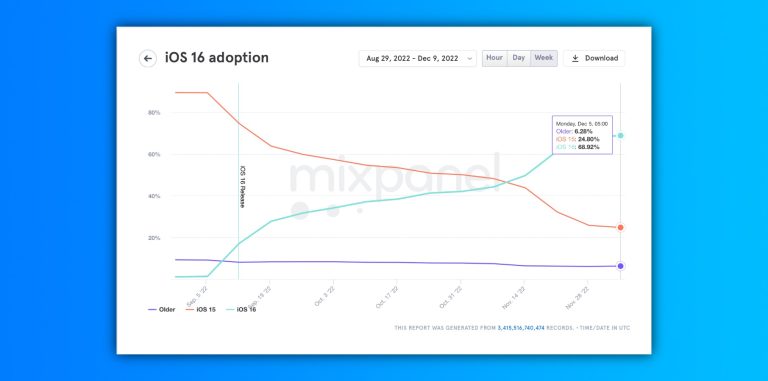Since its launch, iOS 16 has comparatively achieved a higher user base than iOS 15. Almost 100 days after its release on September 12, the latest operating system is in 68.91% of all iPhone models.
The information comes from the third-party analytics website Mixpanel. Comparatively, nearly 100 days after its release, iOS 15 had around 63% of the user base. That said, neither of these operating systems was able to outstand iOS 14, which, by that time, already had around 80% of all iPhones running this OS.
There are a few reasons why iOS 14 was such a success. Not only was this operating system available to a bunch of iPhone models, but it offered a redesign to the Home Screen for the first time since iOS 7. Home Widgets and the App Library were instant hits, while functions like Focus Mode and iMessage tweaks weren’t as popular with iOS 15.
iOS 16, on the other hand, also brought an instant hit feature: the Lock Screen redesign. With that, users can customize the wallpaper, the clock font, add widgets, and more. For iPhone 14 Pro models, the new Always-On display similarly shows the Lock Screen as the Apple Watch does.

The addition of Live Activities, which extends the Lock Screen use, was also a significant upgrade made available with iOS 16.1 – which also made more users upgrade to the latest version.
In addition, more iPhone users will likely upgrade to iOS 16 as we approach iOS 16.2. When this update launches next week, Apple will bring Apple Music Sing, which brings karaoke functionality to its music streaming service, the Freeform app, a white canvas for users to collaborate on the iPhone, iPad, and Mac, as well as improvements to the Live Activities feature.
BGR will keep monitoring iOS 16 numbers as the adoption keeps increasing.








